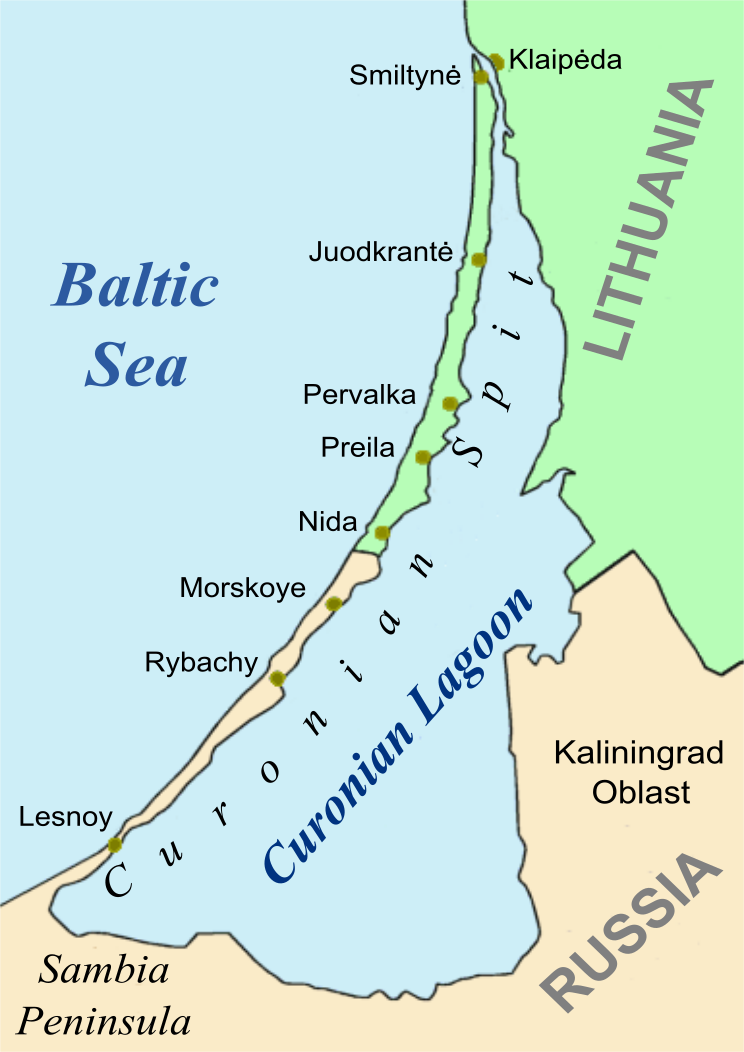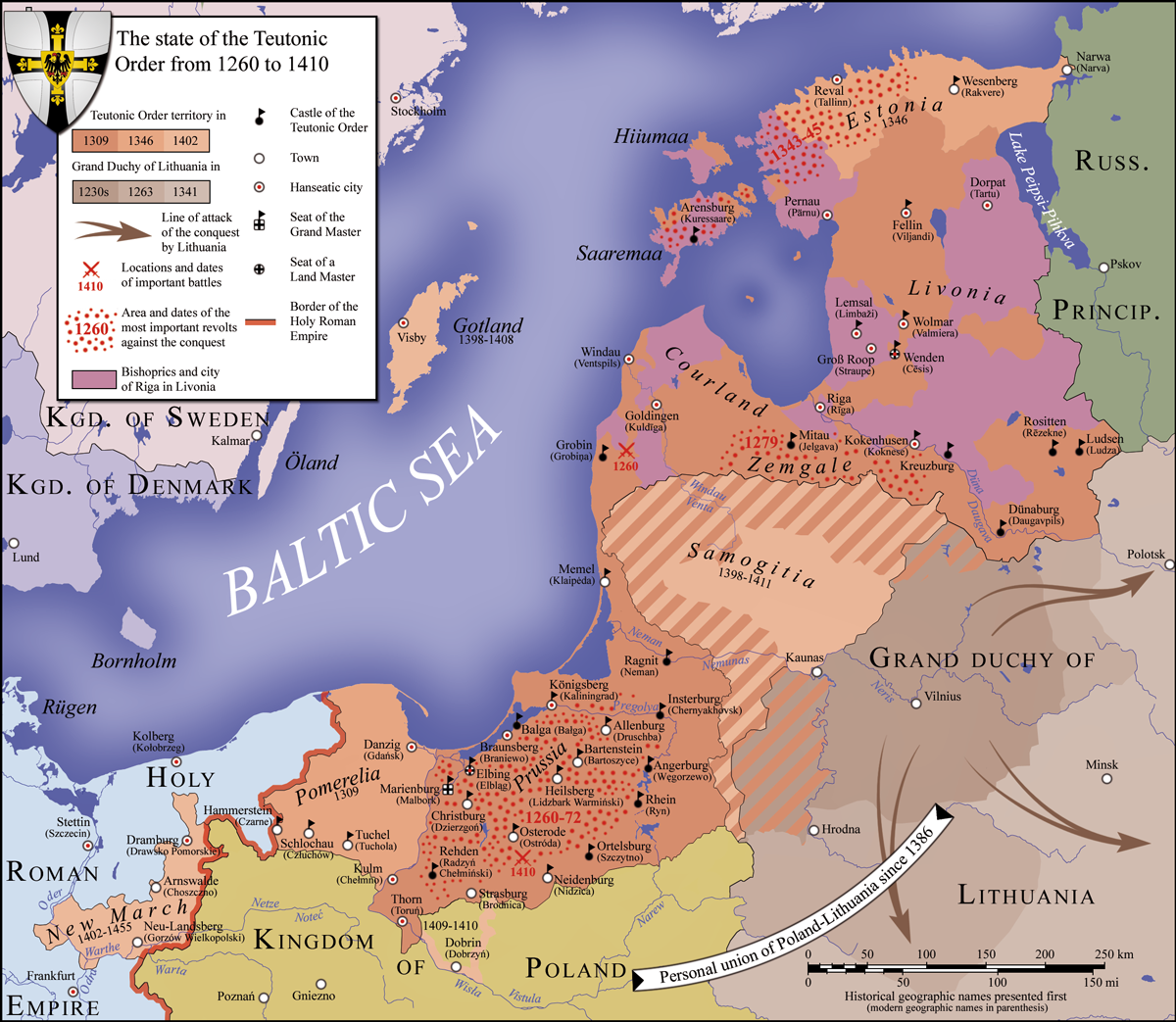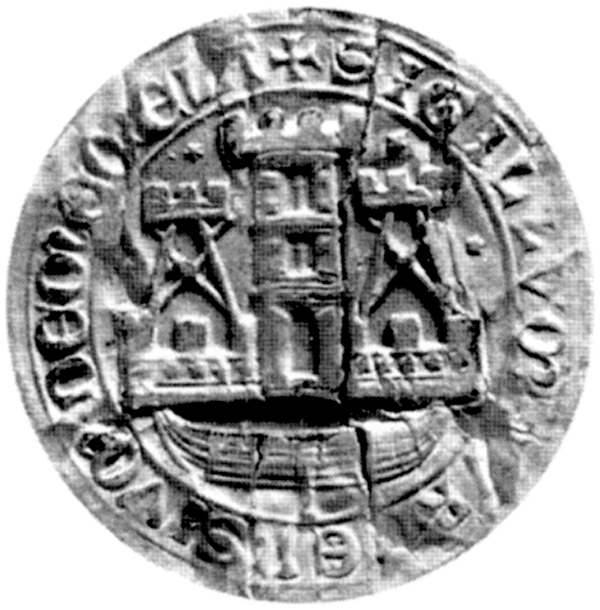|
Nidden
Nida (german: Nidden, Kursenieki: ''Nīde'') is a resort town in Lithuania, the administrative centre of Neringa municipality. Located on the Curonian Spit between the Curonian Lagoon and the Baltic Sea, it is the westernmost point of Lithuania and the Baltic states, close to the border with the Russian Kaliningrad Oblast exclave. It currently has about 2,385 residents. History A settlement area of the Baltic Curonians, the original place called ''nida'' ("fluent" in the Old Prussian language) was first mentioned in 1385 documents issued by the Teutonic Knights, who ruled the lands within their Monastic State. The original settlement on the road along the Curonian Spit from Königsberg to Memel was located about south of its today's position near the ''Hohe Düne'' (High Dune) at Cape Grobštas (from Old Prussian: ''grabis'', "hill"). In 1454, King Casimir IV Jagiellon incorporated the region to the Kingdom of Poland upon the request of the anti-Teutonic Prussian Confed ... [...More Info...] [...Related Items...] OR: [Wikipedia] [Google] [Baidu] |
Curonian Spit
The Curonian (Courish) Spit ( lt, Kuršių nerija; russian: Ку́ршская коса́ (Kurshskaya kosa); german: Kurische Nehrung, ; lv, Kuršu kāpas) is a long, thin, curved sand-dune spit that separates the Curonian Lagoon from the Baltic Sea coast. Its southern portion lies within Kaliningrad Oblast, Russia, and its northern within southwestern Klaipėda County, Lithuania. It is a UNESCO World Heritage Site shared by Lithuania and Russia. Geography The Curonian Spit stretches from the Sambia Peninsula on the south to its northern tip next to a narrow strait, across which is the port city of Klaipėda on the mainland of Lithuania. The northern long stretch of the Curonian Spit peninsula belongs to Klaipėda County, Lithuania, while the rest is part of the Kaliningrad Oblast, Russia. The width of the spit varies from a minimum of in Russia (near the village of Lesnoy) to a maximum of in Lithuania (just north of Nida). Geologic history The Curonian Spit wa ... [...More Info...] [...Related Items...] OR: [Wikipedia] [Google] [Baidu] |
Curonian Lagoon
The Curonian Lagoon (or Bay, Gulf; russian: Куршский залив, lt, Kuršių marios, pl, Zalew Kuroński, german: Kurisches Haff, lv, Kuršu joma) is a freshwater lagoon separated from the Baltic Sea by the Curonian Spit. Its surface area is . The Neman River ( lt, Nemunas) supplies about 90% of its inflows; its watershed consists of about 100,450 square kilometres in Lithuania and Russia's Kaliningrad Oblast. Human history In the 13th century, the area around the lagoon was part of the ancestral lands of the Curonians and Old Prussians. Later it bordered the historical region of Lithuania Minor. At the northern end of the Spit, the Klaipėda Strait connects the lagoon to the Baltic Sea, and the place was chosen by the Teutonic Knights in 1252 to found ''Memelburg'' castle and the city of Memel — officially called Klaipėda in 1923–39, when the Memel Territory was separated from Germany, and again after 1945, when it became part of the Lithuanian SSR. ... [...More Info...] [...Related Items...] OR: [Wikipedia] [Google] [Baidu] |
Countries Of The World
The following is a list providing an overview of sovereign states around the world with information on their status and recognition of their sovereignty. The 206 listed states can be divided into three categories based on membership within the United Nations System: 193 UN member states, 2 UN General Assembly non-member observer states, and 11 other states. The ''sovereignty dispute'' column indicates states having undisputed sovereignty (188 states, of which there are 187 UN member states and 1 UN General Assembly non-member observer state), states having disputed sovereignty (16 states, of which there are 6 UN member states, 1 UN General Assembly non-member observer state, and 9 de facto states), and states having a special political status (2 states, both in free association with New Zealand). Compiling a list such as this can be a complicated and controversial process, as there is no definition that is binding on all the members of the community of nations conc ... [...More Info...] [...Related Items...] OR: [Wikipedia] [Google] [Baidu] |
Baltic Sea, Beach And Dunes
Baltic may refer to: Peoples and languages *Baltic languages, a subfamily of Indo-European languages, including Lithuanian, Latvian and extinct Old Prussian * Balts (or Baltic peoples), ethnic groups speaking the Baltic languages and/or originating from the Baltic countries *Baltic Germans, historical ethnic German minority in Latvia and Estonia * Baltic Finnic peoples, the Finnic peoples historically inhabiting the area on the northeastern side of the Baltic sea Places Northern Europe * Baltic Sea, in Europe * Baltic region, an ambiguous term referring to the general area surrounding the Baltic Sea * Baltic states (also Baltic countries, Baltic nations, Baltics), a geopolitical term, currently referring to Estonia, Latvia and Lithuania * Baltic Provinces or governorates, former parts of the Swedish Empire and then Russian Empire (in modern Latvia, Estonia) * Baltic Shield, the exposed Precambrian northwest segment of the East European Craton * Baltic Plate, an ancient tectonic ... [...More Info...] [...Related Items...] OR: [Wikipedia] [Google] [Baidu] |
Fief
A fief (; la, feudum) was a central element in medieval contracts based on feudal law. It consisted of a form of property holding or other rights granted by an overlord to a vassal, who held it in fealty or "in fee" in return for a form of feudal allegiance, services and/or payments. The fees were often lands, land revenue or revenue-producing real property like a watermill, held in feudal land tenure: these are typically known as fiefs or fiefdoms. However, not only land but anything of value could be held in fee, including governmental office, rights of exploitation such as hunting, fishing or felling trees, monopolies in trade, money rents and tax farms. There never did exist one feudal system, nor did there exist one type of fief. Over the ages, depending on the region, there was a broad variety of customs using the same basic legal principles in many variations. Terminology In ancient Rome, a "benefice" (from the Latin noun , meaning "benefit") was a gift of land () f ... [...More Info...] [...Related Items...] OR: [Wikipedia] [Google] [Baidu] |
Thirteen Years' War (1454–1466)
The Thirteen Years' War (german: Dreizehnjähriger Krieg; pl, wojna trzynastoletnia), also called the War of the Cities, was a conflict fought in 1454–1466 between the Prussian Confederation, allied with the Crown of the Kingdom of Poland, and the State of the Teutonic Order. The war began as an uprising by Prussian cities and local nobility to win independence from the Teutonic Knights. In 1454 Casimir IV married Elisabeth of Habsburg and the Prussian Confederation asked Poland's King Casimir IV Jagiellon for help and offered to accept the king as protector instead of the Teutonic Order. When the King assented, war broke out between supporters of the Prussian Confederation, backed by Poland, and backers of government by the Teutonic Knights. The Thirteen Years' War ended in the victory of the Prussian Confederation and Poland and in the Second Peace of Thorn (1466). This was soon followed by the War of the Priests (1467–1479), a drawn-out dispute over the independ ... [...More Info...] [...Related Items...] OR: [Wikipedia] [Google] [Baidu] |
Poznań
Poznań () is a city on the River Warta in west-central Poland, within the Greater Poland region. The city is an important cultural and business centre, and one of Poland's most populous regions with many regional customs such as Saint John's Fair (''Jarmark Świętojański''), traditional Saint Martin's croissants and a local dialect. Among its most important heritage sites are the Renaissance Old Town, Town Hall and Gothic Cathedral. Poznań is the fifth-largest and one of the oldest cities in Poland. As of 2021, the city's population is 529,410, while the Poznań metropolitan area (''Metropolia Poznań'') comprising Poznań County and several other communities is inhabited by over 1.1 million people. It is one of four historical capitals of medieval Poland and the ancient capital of the Greater Poland region, currently the administrative capital of the province called Greater Poland Voivodeship. Poznań is a center of trade, sports, education, technology an ... [...More Info...] [...Related Items...] OR: [Wikipedia] [Google] [Baidu] |
Prussian Confederation
The Prussian Confederation (german: Preußischer Bund, pl, Związek Pruski) was an organization formed on 21 February 1440 at Kwidzyn (then officially ''Marienwerder'') by a group of 53 nobles and clergy and 19 cities in Prussia, to oppose the arbitrariness of the Teutonic Knights. It was based on an earlier similar organization, the Lizard Union established in 1397 by the nobles of Chełmno Land. In 1454, the leader of the Confederation, Johannes von Baysen (Jan Bażyński), formally asked King Casimir IV Jagiellon, to incorporate Prussia into the Kingdom of Poland. This marked the beginning of the Thirteen Years' War between the Order's State and Poland, with the cities co-financing the military costs of the latter. Background According to the 1411 First Peace of Thorn which followed the Teutonic Knights' defeat in the Battle of Grunwald, the Teutonic Order had to pay high reparations to the Kingdom of Poland. The monastic state imposed high taxes on the cities to ra ... [...More Info...] [...Related Items...] OR: [Wikipedia] [Google] [Baidu] |
Crown Of The Kingdom Of Poland
The Crown of the Kingdom of Poland ( pl, Korona Królestwa Polskiego; Latin: ''Corona Regni Poloniae''), known also as the Polish Crown, is the common name for the historic Late Middle Ages territorial possessions of the King of Poland, including the Kingdom of Poland proper. The Polish Crown was at the helm of the Polish–Lithuanian Commonwealth from 1569 to 1795. Major political events The Kingdom of Poland has been traditionally dated back to c. 966, when Mieszko I and his pagan Slavic realm joined Christian Europe ( Baptism of Poland), establishing the state of Poland, a process started by his Polan Piast dynasty ancestors. His oldest son and successor, Prince Bolesław I Chrobry, Duke of Poland, became the first crowned King of Poland in 1025. Union of Krewo The Union of Krewo was a set of prenuptial agreements made in the Kreva Castle on August 13, 1385. Once Jogaila confirmed the prenuptial agreements on August 14, 1385, Poland and Lithuania formed a pers ... [...More Info...] [...Related Items...] OR: [Wikipedia] [Google] [Baidu] |
Casimir IV Jagiellon
Casimir IV (in full Casimir IV Andrew Jagiellon; pl, Kazimierz IV Andrzej Jagiellończyk ; Lithuanian: ; 30 November 1427 – 7 June 1492) was Grand Duke of Lithuania from 1440 and King of Poland from 1447, until his death. He was one of the most active Polish-Lithuanian rulers, under whom Poland, by defeating the Teutonic Knights in the Thirteen Years' War recovered Pomerania, and the Jagiellonian dynasty became one of the leading royal houses in Europe. The great triumph of his reign was bringing Prussia under Polish rule. The rule of Casimir corresponded to the age of "new monarchies" in western Europe. By the 15th century, Poland had narrowed the distance separating it from western Europe and become a significant factor in international relations. The demand for raw materials and semi-finished goods stimulated trade, producing a positive balance, and contributed to the growth of crafts and mining in the entire country. He was a recipient of the English Order of the Gar ... [...More Info...] [...Related Items...] OR: [Wikipedia] [Google] [Baidu] |
Klaipėda
Klaipėda (; ; german: Memel; pl, Kłajpeda; russian: Клайпеда; sgs, Klaipieda) is a city in Lithuania on the Baltic Sea coast. The capital of the eponymous county, it is the third largest city and the only major seaport in Lithuania. The city has a complex recorded history, partially due to the combined regional importance of the usually ice-free Port of Klaipėda at the mouth of the river . Located in the region of Lithuania Minor, at various times, it was a part of the Polish–Lithuanian Commonwealth, Prussia and Germany until the 1919 Treaty of Versailles. As a result of the 1923 Klaipėda Revolt it was annexed by Lithuania and has remained with Lithuania to this day, except between 1939 and 1945 when it was occupied by Germany following the 1939 German ultimatum to Lithuania. The population has migrated from the city to its suburbs and hinterland. The number of inhabitants of Klaipėda city shrank from 202,929 in 1989 to 162,360 in 2011, but the urban ... [...More Info...] [...Related Items...] OR: [Wikipedia] [Google] [Baidu] |
Königsberg
Königsberg (, ) was the historic Prussian city that is now Kaliningrad, Russia. Königsberg was founded in 1255 on the site of the ancient Old Prussian settlement ''Twangste'' by the Teutonic Knights during the Northern Crusades, and was named in honour of King Ottokar II of Bohemia. A Baltic port city, it successively became the capital of the Królewiec Voivodeship, the State of the Teutonic Order, the Duchy of Prussia and the provinces of East Prussia and Prussia. Königsberg remained the coronation city of the Prussian monarchy, though the capital was moved to Berlin in 1701. Between the thirteenth and the twentieth centuries, the inhabitants spoke predominantly German, but the multicultural city also had a profound influence upon the Lithuanian and Polish cultures. The city was a publishing center of Lutheran literature, including the first Polish translation of the New Testament, printed in the city in 1551, the first book in Lithuanian and the first Lutheran ca ... [...More Info...] [...Related Items...] OR: [Wikipedia] [Google] [Baidu] |








.jpg)